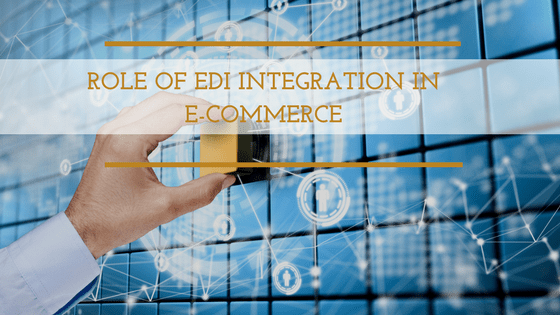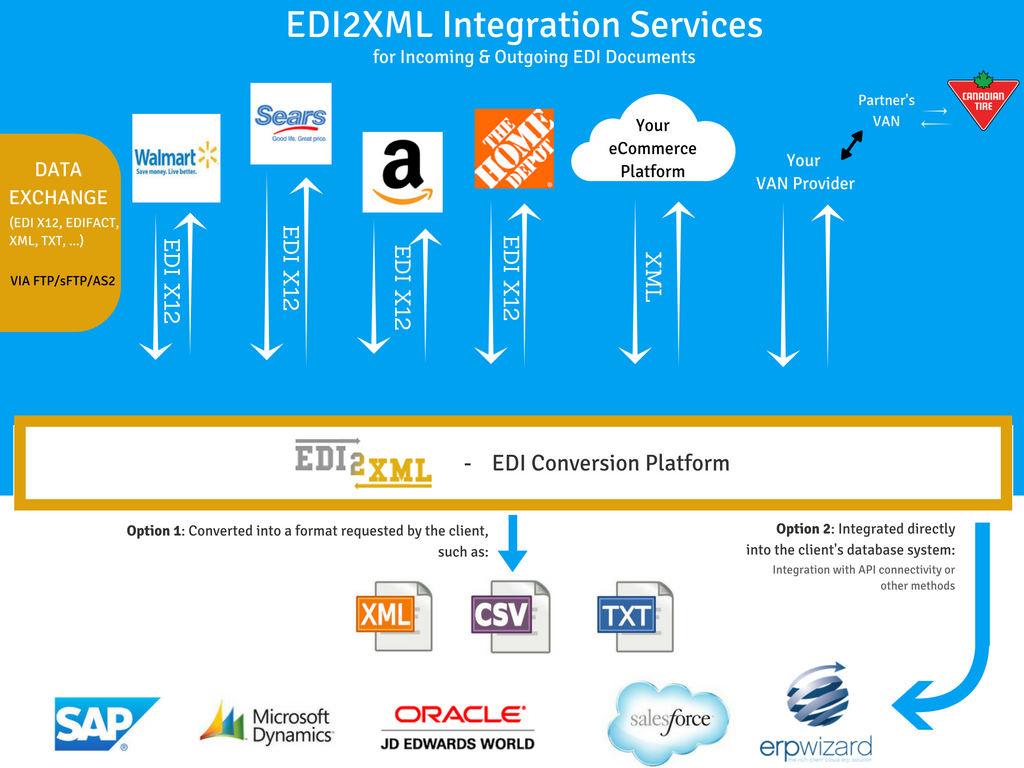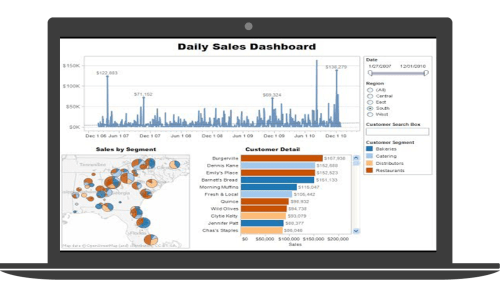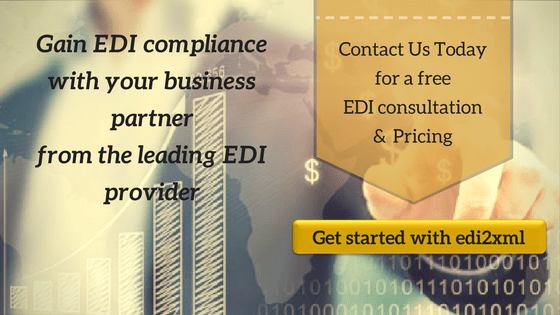Posts
Role of EDI Integration in The Global E-commerce Trends 2023
This post was updated to reflect current trends and information.
We get a lot of questions about the relationship between our EDI Services and e-commerce; So, we have decided to close this year by predicting the global e-commerce trends for 2023, and the role of EDI Integration in e-commerce. In this article, you will learn how our popular EDI2XML Fully Managed Services can help increase your e-commerce success in 2023.
The Global E-commerce Trends 2023

2023 is around the corner it’s time to plan your actions. E-commerce continues to show rapid growth, but competition is growing faster than the market itself. This means that it will be not so easy to “win hearts” of buyers, and you can lose them more easily. Customers will be more and more capricious about delivering goods and prices.
2023 will be the year when competition in e-commerce will reach a new level. More and more young companies are appearing in the online marketplace. The big, strong brands are heavily promoting their online offerings on the Internet. They are looking to occupy a significant part of the e-commerce market, because consumers are increasingly going online.
According to Statista in 2022, e-retail sales surpassed 5.7 billion U.S. dollars worldwide.
E-commerce in the United States of America
Since the dawn of e-commerce, the main driver for the growth of this market was the United States. Online trading has become a global phenomenon, but the US remained one of the most important markets for e-commerce.
The annual increase in sales via the Internet has led to an explosive growth in e-commerce in the United States over the past 15 years.
According to Digital Commerce 360 US eCommerce grows 7.3% in Q2 2022
Although growth rates remain active, the US market is not so far from saturation point. We can expect that sales to stop growing at such a rapid pace.
The American e-commerce market gave way to China
The situation in the Asian markets is directly opposed, especially in China. According to forecasts, the rapid growth of e-commerce will continue in China. The growth of Chinese online sales is taking a huge share of the global e-commerce market.
Despite the large volume of sales in America, the world record set by the Chinese online giant Alibaba that records $56bn in first post-virus Singles’ Day sales, beating 2019 high.
According to John Caplan, head of North American B2B, Alibaba Group, More than 150,000 brands and merchants doing business on Alibaba’s online platforms.
Revenue is expected to show an annual growth rate of 13.9 % resulting in a market volume of US$956,488 m in 2022.

Source: Statista
The growth of e-commerce in Asian countries has serious consequences for companies engaged in online business. To benefit from the new trend, they need to enter the international market with their proposals.
EDI – unlimited possibilities to sell across the globe
The advantage of online trading is that you do not need a physical store in order to start selling in a new country. International delivery of goods is becoming more and more accessible.
Read: Must-Have BigCommerce Integrations
However, you should always keep in mind that it is practically impossible to carry out online business, without full integration of systems between your eCommerce platform and your vendors, including Electronic data interchange (EDI); especially we are now in the international trade and transactions are becoming very “time-sensitive”.
EDI and systems Integration, play a major role in e-commerce. To be a supplier of companies such as Amazon, Wal-Mart, Cabela’s, Bed Bath & Beyond, Costco, and other important retailers, you need to be able to send and receive documents electronically.
EDI has proved its reliability and importance for businesses. Processing orders in digital format automatically increase the speed, accuracy and efficiency of any business.
Fully Managed EDI Service for E-commerce
EDI2XML Managed Services is the perfect option for businesses looking to simplify their entire EDI and integration process with their Trading Partners. This service is ideal for businesses of all sizes, from various industries.
EDI2XML is a full-service offering. Our team of EDI and IT integration experts handle a company’s entire EDI project from start to end. All conversions of EDI files are done at our end, leaving customers with no on-site installation of software or hardware. Their EDI project is on time and within budget.
Keep learning about EDI integration and the MANY benefits it has for your online business by visiting our website EDI2XML.com or contacting us directly today!
RELATED POSTS:
Request EDI2XML Service Pricing Package
Must-Have BigCommerce Integrations
Fully managed EDI service VS HTTP Web Service: Which is Better for Your Business ?
 We’ve all heard our fair share of nightmare stories when it comes to new software, more specifically Enterprise Resource Planning (ERP), implementations. What we don’t often hear, however, are the mistakes that were made during this project that could have been avoided. In many of these stories, the blame is put on the Software Provider or on employees who resist change and the system. However, there are some mistakes that business executives make that can affect the outcome of an ERP software implementation.
We’ve all heard our fair share of nightmare stories when it comes to new software, more specifically Enterprise Resource Planning (ERP), implementations. What we don’t often hear, however, are the mistakes that were made during this project that could have been avoided. In many of these stories, the blame is put on the Software Provider or on employees who resist change and the system. However, there are some mistakes that business executives make that can affect the outcome of an ERP software implementation.
Here are 5 common mistakes that business leaders make throughout a new software project;
-
They opt out of End User Training and After-Sales Support
Before any implementation project begins, a Software Provider will approach the management team with various support plans to choose from. These discounted plans will include billable hours for end user training and post-implementation support. It is up to the customer to choose which plan they’d like to have, depending on the amount of hours they request for support and training for themselves and for all their system users. In many cases, however, in order to keep costs down, executives will opt out of any support plan (which in turn opts them out of end user training for their employees). This is a huge mistake that many business leaders make. Without proper user support and thorough end user training sessions, the chances of user resistance and low productivity increase. If employees don’t fully know how to use the system to its full potential, then companies won’t realize the full benefits of an ERP system, but rather will experience decreased individual performance and thus decreased overall productivity.
In the end, by saving on the support plan, they are losing out more in the long run. End user training and proper support can alleviate stress and combat fears of employees, associated to using a new system, and allows them to accept this big change. It also teaches them the necessary skills to prevent any problems in the system and to efficiently handle unexpected issues with confidence. Never forget that a software system is nothing without its users. System users are the key to unlocking the benefits and improvements that a good software system can bring to a company. Invest in your end users and never pass up on support and training plans. It’s an investment you’ll be happy you made in the long run.
-
Lack of participation from business leaders
In our very own ‘Process to Succeed’ guideline that we share with customers prior to any new ERP software implementation, we stress the importance of top-level management participation during the planning process as well as throughout the implementation phase. This is a prerequisite to any of our large software implementations, in order for our customers to achieve a successful implementation. What does this participation include? We understand that business owners and executives are extremely busy with their day-to-day tasks and therefore won’t have the time to constantly be working on the implementation project (and we don’t expect them to). Normally, companies will put together a small internal team of about 5 (or less) employees, from various departments, to manage and overlook the ERP implementation project. This is great! The participation that we require from top management comes more in the form of support, motivation and encouragement. Company owners, executives and managers need to have their own confidence in using the system and share their excitement and knowledge with their team, especially when they see them frustrated or afraid of the new changes ahead. Management should remain unified in support of the project and should continuously encourage their employees to not give up and learn all they can about new processes and the new system. During the end user training periods, it would also be helpful if management can alleviate their team, for a short period of time, from regular responsibilities, in order to take the necessary time to get properly trained by the Software Provider.
-
Leaving it all in the hands of the IT Software Provider
We’ve said it before and we’ll say it again and again and again…a software implementation, especially one as large as a full ERP implementation, is only successful if ALL parties participate since everyone in a company will be affected by the change. Similar to mistake #2 above, every team member, even the leaders, needs to have some sort of involvement in the implementation project. It requires synchronous collaboration, which involves the IT team and the business team working together simultaneously and remaining in constant communication as the project progresses, to ensure everything internally is running smoothly and everyone’s needs are being met. Employees are the ones that know the business processes inside out; the IT team is there to help streamline, automate and integrate those processes. It’s important to explain to employees how their participation and role in the project will influence its success. This will give them a sense of commitment to the project and hopefully instil a positive attitude towards the system and implementation process, which is definitely welcome.
-
Having unrealistic expectations of timelines and costs
Every software implementation is unique. During a new project, Software Providers deal with a new company, new business people, new processes, new requests and new expectations. The business as a whole may be similar to other companies but an implementation is never the exact same from company to company. It’s absolutely critical to share all of your expectations and assumptions you have of the new system and the implementation phase. This includes any timelines, costs, benefits, project roles, etc. By sharing all of this with the IT Provider, they’ll be able to set things straight right from the start. For example, if you were expecting an implementation phase to only last 1 month, the IT Provider, from experience and expertise in the field, may come back to you with a more realistic timeline of 3 months. Therefore, you won’t be disappointed and frustrated when the implementation lasts longer than your 1-month expectation. The Software Provider will also share all of their expectations from your team and of the project as a whole. Together you’ll come up with realistic goals and expectations for your specific case, allowing everyone to be on the exact same page.
Talk with your Software Provider first and get their input on timeframes and realistic expectations, as they can provide their expertise on the matter and knowledge from previous experiences.
-
Beginning the new software project without a plan of action & workflow
It is never a good idea to start ANY project without a plan of action. So why start an ERP implementation without one? What every business leader should do is;
- Sit down with the Software Provider to discuss and outline the complete process or plan of action for the implementation phase and create a workflow
- Identify everyone’s role and responsibility throughout the implementation phase
- Share the plan of action with all involved parties, along with their roles and responsibilities
- Properly educate all employees (or users of the new system) about any change in business processes that will affect their day-to-day work life.
It’s best if companies have a well-designed plan before starting the project, accounting for minor changes, in order to avoid confusion, frustrations, increased costs, etc. Major software or process changes should all be accounted for during the outline of the plan of action. Inform all employees of the coming changes so they aren’t surprised and can have time to accept these changes.
If you’re a leader of a company, looking to implement a new software system, don’t make these common 5 mistakes. Contact us today for more information.
 It’s already nearing the end of 2016. Crazy how fast time flies! For many people, this time is the busiest, filled with corporate events, family gatherings, holiday shopping, vacations and more. For many businesses, especially in the retail industry, it’s also one of their busiest times of the year. However, there are those industries or companies where December is a quiet month, making it the perfect time to look ahead and plan for the upcoming year. It’s when executives can finally set aside a few hours or days to establish and finalize next year’s budgets, prioritize upcoming projects, assess employee performance and review goals and benchmarks for the following year. What our consultants always encourage is to also set some time aside to review business processes and determine which ones aren’t working well anymore. For example, are you noticing an increase in unhappy customers, an increase in manual data entry, duplicated work, an increase in costs, missed deadlines, frustrated, and unproductive employees…? If so, it’s definitely time to improve the processes that don’t work and are leading to these problems.
It’s already nearing the end of 2016. Crazy how fast time flies! For many people, this time is the busiest, filled with corporate events, family gatherings, holiday shopping, vacations and more. For many businesses, especially in the retail industry, it’s also one of their busiest times of the year. However, there are those industries or companies where December is a quiet month, making it the perfect time to look ahead and plan for the upcoming year. It’s when executives can finally set aside a few hours or days to establish and finalize next year’s budgets, prioritize upcoming projects, assess employee performance and review goals and benchmarks for the following year. What our consultants always encourage is to also set some time aside to review business processes and determine which ones aren’t working well anymore. For example, are you noticing an increase in unhappy customers, an increase in manual data entry, duplicated work, an increase in costs, missed deadlines, frustrated, and unproductive employees…? If so, it’s definitely time to improve the processes that don’t work and are leading to these problems.
In today’s world, things can change in an instant. Therefore, your business processes may have been efficient 5 years ago (or even one year ago!), but today, they are considered inefficient or outdated due to new technology, new goals, industry or consumer changes, etc.
So what can you do about it?
We’ve compiled an End-of-Year Checklist for you so that you can overcome challenges and improve outdated processes for 2017;
- Write down the main problems/challenges you’ve noticed this past year;
- Where are costs going up? Where are most of the delays occurring? How come customers or suppliers are growing more unhappy? Why are deadlines constantly missed? Why are errors increasing? …
- Analyze these processes. Focus on either one or many of these problem areas and make them your priority for 2017. A great way to really understand what’s going on is to speak directly with the employees who are affected by the processes and get their feedback on why things aren’t working so well anymore. Perhaps they have an idea on how to improve them. It’s critical that you and everyone involved understand exactly what these specific processes are meant to do before addressing the problems and redesigning the processes.
- Restructure those inefficient processes; brainstorm with your team and jot down all the ideas to solve these problems. Many companies refer to a consultant during this step, to help them find possible risks and points of failure of each possible solution.
- The next step involves securing the resources required to implement change (change = new processes or process alterations required to improve efficiency & solve current challenges/issues). Do you need to hire someone new? Do you need to implement new software applications or outsource an IT provider for their services? Whatever it may be, now’s the time to set the budget (make sure it’s a realistic budget!).
For example, let’s say you realized that costs rose with the increase in incoming purchase orders in 2016. Perhaps this was due to hiring more sales reps to input all of these orders into the management system. Now you have more salaries, more manual data entry, and in turn more errors (human errors are likely to occur with data entry). With more errors in customer orders, there are more unsatisfied customers. What is a possible solution to this problem? Reduce the manual data entry or human intervention when it comes to incoming purchase orders through the use of an automated and integrated Electronic Data Interchange (EDI) service. With EDI, incoming Purchase Orders (POs) can be integrated directly into your management system. No human intervention required! This then reduces errors, plus improves the speed in which orders are processed and delivered to customers. A new budget will then be required for 2017 for an EDI integration project.
Going through the above checklist before the New Year will allow you to see real improvements next year. Now’s the time to ensure that your processes are effective and streamlined, your employees are productive, happy and properly trained, customers are satisfied and the technologies used are up-to-date, simple and a good fit for your business. We find too many businesses with complex software solutions, at which point their executives then wonder why their processes are so complex. By 2017, companies will look to have more affordable, flexible and simple solutions in order to have more agility for change. Set your plan and realistic budgets in order to benefit from efficient, streamlined processes.
In today’s business world, the right technology can make a world of difference. IT experts are always pushing to install the best hardware, software, IT services and cloud applications to simplify the lives of business people. This year has been another big year for IT advancements and we couldn’t be more excited about that. We love seeing businesses leverage technology with the right solutions for them, in order to benefit from efficiencies and cost savings.
Here are our most popular and most requested management software solutions and services.
EDI2XML Translation Service
Year after year, we keep seeing an increase in demand for EDI (Electronic Data Interchange) services. Business executives don’t want to hire a full-time in-house EDI specialist anymore to handle their EDI transactions. Nor do they want to hire more customer service reps to manually enter all incoming purchase orders anymore. Many retailers and suppliers are now requiring that any company they do business with must send and receive documents, like Purchase Orders Invoices and Advance Shipping Notices, via EDI.
Companies today are looking not only to implement EDI but to automate this entire process with an outsourced EDI provider. This is why our EDI2XML Translation Service has been one of our most popular services this year. We handle our customers’ EDI requirements from A to Z; we convert their incoming EDI documents into their preferred file format, such as XML (and convert their outgoing XML documents into EDI), as well as handle all new Partner and document setups and manage their continuous communication with their Trading Partners. Our service is affordable, our setup phase is quick and our EDI support team is easily accessible and available; making it the perfect EDI service for any business.

QBR Business Continuity
With ransomware cyberattacks increasing worldwide, it’s not unusual for business executives to come running, asking about our QBR solution. Using the latest technology on the market, this Business Continuity & Disaster Recovery solution is THE best way to protect your data from hardware/software failures, human error, natural disasters, ransomware, computer viruses and more.
No matter the disaster, QBR allows you to recover your data quickly and easily. Businesses can no longer afford to incur downtime that lasts days or weeks, only to later realize that their old, dusty backup tapes haven’t been working for months! With on-site and off-site virtualization, ransomware detection, advanced screenshot verification emails, infinite cloud retention, unlimited agent licensing, instant recovery of entire servers/workstations and more, a company’s data is well protected!

Learn more about QBR here.
Management Software Solutions – The ErpWizard Suite
We are definitely still seeing a demand for complete Enterprise Resource Planning (ERP) systems in the business world. The demand comes from companies that either don’t currently use IT systems to manage their business operations, but instead still use Microsoft Office tools like Excel and Word, as well as companies looking to update their outdated, complex, expensive ERP software.
The transition to a simple, modern ERP system, like our homegrown system – The ErpWizard Suite, has allowed companies to increase visibility into their operations, improve data quality, reduce manual data entry, improve customer service and increase productivity. At the end of the day, when a company has found the right ERP system and Software Provider for their business, they can automate and streamline their processes and improve business agility and performance. That’s the goal of any ERP system. Unfortunately, not many companies realize these benefits at the end of their software implementation (you’d be surprised how many companies don’t even successfully make it to the end of their implementation!).
Technology in the workplace is meant to make business people’s lives a whole lot easier, which is why executives are realizing the importance of a helpful, available, and accessible support team, a flexible, easy-to-use system, and affordable IT costs.
ERP system qualities
Here are some of the main qualities of an ERP system that business executives are looking for:
- Flexibility
- Can easily integrate with other systems
- Is effortlessly accessible from anywhere, at any time to allow users to stay in touch with business operations, even while on vacation or on a business trip
- Easy to use, with a simple, modern interface
- Is continuously updated to accommodate to the ever-changing business environment
- Is well supported by an available and accessible IT support team
- Is affordable !!
This year we have been especially excited about our newly improved ErpWizard Suite. Now, with its new modern, sleek interface, end users will actually enjoy using an ERP system. It’s about time companies moved away from those complex, boring looking, out-dated systems and towards simple, visually appealing management applications, that won’t break the bank.
What do you think of ErpWizard’s new look?
WIMS 2.0 – Warehouse Management
Warehouse Management is another popular software solution, usually integrated within a company’s ERP system. This system allows for better visibility and control of all warehouse activity, which is an absolute must today. A Warehouse Management system allows businesses to know;
-
What’s been delivered and when
-
Where all items are stored in the warehouse facility
-
Which items to pick and how much to pick for delivery
-
The right items to pack using the right shipping cartons and materials
-
What items to ship and where to ship them
All of this is exceptionally important in order to reduce operating expenditures, increase data accuracy, shorten fulfillment lead times, move inventory faster and increase data accessibility. By using wireless scanners, this inventory data collection system is truly bringing better control and insight into warehouse processes. If a company’s warehouse is in order, customers are better served and happy!
Business Intelligence & Analytics
A big favourite among our customers is our Business Intelligence offering. Our Business Intelligence experts are integrating Tableau Software’s BI solution into our customer’s management system in order to provide detailed analyses with customized drillable dashboards, using all real-time data. Our customers are now able to identify hidden trends and strategic information, turn raw data into visual graphs and tables, identify new business opportunities, spot areas of weakness and avoid problems. The insights that our customers are getting from this Business Intelligence solution is giving them the ability to stay ahead of competition.
Contact us to see how our Business Intelligence experts can help you!
The Best Management Software Solutions
 We are certain that demand for these management solutions will only increase, as executives are actively looking to transform their businesses using the latest technologies on the market. We predict that mobile business applications will make this list next year, as business owners are looking to supply their on-site teams with access to their management system to input and review real-time data. Modern, visually appealing, easy to use applications don’t just have to be for personal use; companies should be benefiting from these types of applications as well! One thing is for certain; businesses are looking beyond the brand name when it comes to software systems and taking the time to ensure that the Software Provider and offerings are a good fit for their company.
We are certain that demand for these management solutions will only increase, as executives are actively looking to transform their businesses using the latest technologies on the market. We predict that mobile business applications will make this list next year, as business owners are looking to supply their on-site teams with access to their management system to input and review real-time data. Modern, visually appealing, easy to use applications don’t just have to be for personal use; companies should be benefiting from these types of applications as well! One thing is for certain; businesses are looking beyond the brand name when it comes to software systems and taking the time to ensure that the Software Provider and offerings are a good fit for their company.
Contact us today to learn more about how we can help YOU.
This post was updated to reflect current trends and information.
When we think about insurance policies, many of us think of the most common ones, such as health insurance, life insurance, automobile insurance and property insurance. We all know that the point of having any insurance policy is to protect your most important assets. For a company, what can be considered as important? I’d say their sensitive data! This is why I strongly urge business owners to have, what I like to call, “data insurance”.
“Data Insurance”
 What is “data insurance”? To our team at Namtek Consulting Services, it is a company’s Business Continuity and Disaster Recovery solution and plan. All of our customers, using our QBR Business Continuity solution and service refer to their monthly fee as their data’s insurance policy. They know that no matter what happens, their data is protected and easily recoverable. They are provided with real-time backups, email confirmations ensuring that all backups taken were successful, and quick recovery methods for their data during any crisis or disaster. Please don’t get this mixed up with those old backup tapes and drives. Read how Business Continuity differs from traditional backup and recovery methods.
What is “data insurance”? To our team at Namtek Consulting Services, it is a company’s Business Continuity and Disaster Recovery solution and plan. All of our customers, using our QBR Business Continuity solution and service refer to their monthly fee as their data’s insurance policy. They know that no matter what happens, their data is protected and easily recoverable. They are provided with real-time backups, email confirmations ensuring that all backups taken were successful, and quick recovery methods for their data during any crisis or disaster. Please don’t get this mixed up with those old backup tapes and drives. Read how Business Continuity differs from traditional backup and recovery methods.
To learn how Business Continuity works, check out these short videos on YouTube.
What do companies have to protect their data against?
There are many causes for data loss and downtime, which can include human error (accidental deletion of files or folders), natural disasters (fires or floods), power outages, hardware or software malfunction, and much more.
Ransomware
Another big threat to a company’s data is Ransomware Cyberattacks. This is considered as a growing concern in the today’s business world. Ransomware attacks are when hackers threaten companies (and even individuals) by holding their valuable data hostage and asking for a ransom in order to release their data back to them. Ransoms for individuals are usually around $500 USD but can go much higher for companies.
The ransom, in most cases, isn’t even the biggest problem to these companies. It is the downtime that they experience during this whole ordeal. Employees don’t have any access to the company’s data until they pay the ransom, causing operations to stop. By the time management opens up a bitcoin account, pay the ransom and receive the code to unlock their files from the hackers, a few days could have passed. Time is money. For many companies, this downtime could add up to a much higher dollar amount than the ransom itself.
Therefore, it’s critical to understand that ransomware affects companies in two major ways:
- The ransom itself, which can be upwards of tens of thousands of dollars for businesses.
- Downtime!
Unfortunately, the number of ransomware attacks has been increasing; hackers are realizing that not only can they target individuals, with a $500 USD ransom, but they can target all kinds of businesses, hospitals, universities, etc. in which they know the data at these places is considered to be extremely valuable to them. For Universities that do world-class research, like the University of Calgary, a higher ransom will be requested. Remember, hackers have no moral standards. They can increase the ransom as they please.
More and more, news outlets report successful ransomware campaigns that happen to individuals as well as companies, hospitals and universities.
Read: 2017-2019 Ransomware statistics and facts
CBC News released a story about a ransomware victim who got his home computer seized by a malicious malware program and was asked to pay $800 CAD to get the code to unlock his files. He paid it right away because all of his family photos and wedding photos were held hostage.
The success rate of these cyberattacks are high due to the fact that hackers can’t get caught and they are continuously adapting to changing environments by altering the malware. On top of it, many people don’t think they’ll be a victim until they are, so they ignored expert advice to implement a Business Continuity solution and draw up a Disaster Recovery plan.
I’m here to tell you that, as a business owner, you definitely need to seek out security measures, like QBR Business Continuity, that will protect your data from these cyberattacks or any other crisis or disaster. It’s to protect you from the unexpected.
Key takeaways from Ransomware Cyberattacks:
- EVERYONE can fall victim; from individuals, to small businesses to large enterprises
- The more valuable your data is, the higher your ransom will be
- There is no limit to how many times you get ransomware
- Without a solid Business Continuity solution, once you pay the hacker, the virus remains
- Traditional backup systems aren’t cutting it anymore for these sophisticated types of malware
- Business Continuity saves companies from having to pay a ransom and from incurring any downtime. They can instantly rollback to the most recent time where all of their files were not infected.
Bottom line: Protect your data to keep operations running as usual
 In the end, what matters to every business owner, is how fast employees can get back to work or in other words, how quickly operations can resume, during all sorts of disasters or crises. Be it a fire, a flood, an ice storm (for all our fellow Canadians), a human error, a ransomware attack, or hardware malfunction, it’s important to be well protected. A company’s data is extremely valuable to their operations and it’s time business owners see Business Continuity services as their insurance policy. Our QBR customers can restore an entire server, an entire desktop or simply pick and choose a specific file they accidentally deleted. It’s that simple and truly that remarkable.
In the end, what matters to every business owner, is how fast employees can get back to work or in other words, how quickly operations can resume, during all sorts of disasters or crises. Be it a fire, a flood, an ice storm (for all our fellow Canadians), a human error, a ransomware attack, or hardware malfunction, it’s important to be well protected. A company’s data is extremely valuable to their operations and it’s time business owners see Business Continuity services as their insurance policy. Our QBR customers can restore an entire server, an entire desktop or simply pick and choose a specific file they accidentally deleted. It’s that simple and truly that remarkable.
Business owners may think that the chances of them experiencing data loss or downtime are slim. It’s actually a lot more prevalent than one may think. According to Peer1 hosting, “90% of businesses unexpectedly lose access to their critical systems and one-third of them deal with downtime each and every month. The average downtime in the U.S. is 7.9 hours, and in Europe, businesses average 10.3 hours of downtime”. When this happens, and depending on the cause of downtime, these companies will suffer from loss of data and loss of revenue, amongst other major business impacts.
How much will 7.9 hours of downtime cost YOUR business?
Once you see an actual dollar amount linked to your downtime, you may start re-thinking having that “data insurance policy”.
Protect your company’s data and get some “data insurance”. Contact us about our Business Continuity service – QBR. You’ll have the peace of mind when it comes to your data’s safety.
Effectively Dealing with Change in the Workplace As we’ve mentioned in previous articles and papers, change in the workplace is inevitable. The business world is constantly evolving and businesses should always be ready to adapt accordingly. As industries grow, businesses have to evolve; as technology advances, businesses have to keep up; as governments pass new […]
This post was updated to reflect current trends and information.
We love eCommerce Stores and we love EDI services. Who knew that we’d love them both even more by integrating the two! Read more
During the first week of June, according to CBC News, the University of Calgary became a victim of a ransomware cyber attack. A ransom note was left when the University first detected an encryption on their computer network. The amount requested for the method of decryption was $20,000, which was eventually paid to the attacker on June 7th, 2016. The encryption meant that their students and researchers would not be able to access any of their important files, so long as the ransom was not paid, in order to receive the decryption key. Read more
CONTACT US
400 Blvd Curé-Labelle, #304 Laval QC H7V 2S7 Canada
Phone: +1 450-681-3009
Email: support@namtek.ca
Website: https://www.namtek.ca/
Latest Blog Posts
 The Complete Guide to Grants Management Software: From Features to SelectionMarch 17, 2025 - 5:37 pm
The Complete Guide to Grants Management Software: From Features to SelectionMarch 17, 2025 - 5:37 pm AMFQ IT Modernization Case Study: Upgrading Legacy Systems with Magic xpaFebruary 27, 2025 - 8:10 pm
AMFQ IT Modernization Case Study: Upgrading Legacy Systems with Magic xpaFebruary 27, 2025 - 8:10 pm Public vs. Private Cloud Hosting: Key Differences and Benefits for BusinessesJanuary 6, 2025 - 9:12 pm
Public vs. Private Cloud Hosting: Key Differences and Benefits for BusinessesJanuary 6, 2025 - 9:12 pm
NEWSLETTER
Subscribe today to our Newsletter in order to stay up-to-date with all company news and events.


